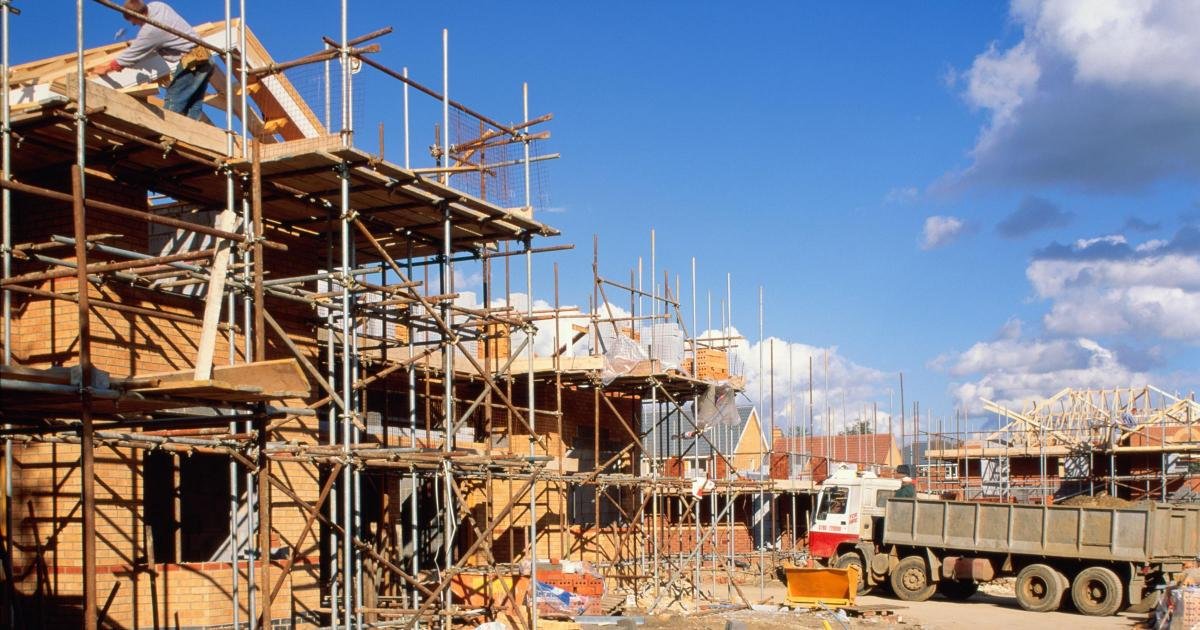A sluggish and under-resourced planning system, spiralling finance and construction costs and a heavy regulatory burden were cited by experts as impediments to solving the “national housing emergency”, which is affecting all types of tenure. And it appears there is not much prospect of any of those difficulties easing significantly soon.
That the capacity of Scotland’s small and medium sized builders to help construct the amount of homes the country needs is steadily diminishing, as SMEs find it hard to access finance, does not instil confidence either.
Jane Wood, chief executive of Homes for Scotland, articulated the malaise when she said a list of 50 barriers to housebuilding was currently in the in-tray of Scottish Government officials, with “planning reform” at the top. However, she said the situation is also complicated by events south of the Border, where public limited companies are saying it is now “easier to do business” amid the UK Government’s mission to get housebuilding going in England.
“That worries me about getting that investment in,” Ms Wood said. “Access to finance is a big problem… and we have to be very careful that we are protecting the SME level of our sector. Just to give you a very scary statistic… in 2017 40% of houses were built by SMEs. It has gone down to 20% and that is really concerning. The key element to that is access to finance.”
Ms Wood added: “The state of the whole housing supply in Scotland worries me… ultimately, housing completions and starts are falling year on year. They are down 17% and 12% respectively this year and they are not going back up. We have got this horrible badge in Scotland that we have a housing emergency – that is not good for the country or investors. We have got 28% of households in Scotland living in some sort of housing need and that is before we start on homelessness. So the overall picture is a really challenging one.”
Neither will those at the conference have been heartened to hear another expert highlight the weaknesses of the planning system in Scotland. William Kyle of Thriving Investments, which funds the development of mid-market homes for rent in central Scotland, said the system “has not really been functioning as it should” since the coronavirus pandemic.
Read more:
“We need to get that planning system working such that viable sites, and sites that are broadly acceptable in terms of residential development, are fast-tracked through that system,” he declared.
To be fair to the Scottish Government, it has recognised that improvements to the planning system are required to address the housing emergency. In November, the chief planner cited a report by the Competition and Markets Authority, which found the “process was not predictable for housebuilders, and can be costly, lengthy and complex”.
The chief planner also made the interesting point that planning permission has been granted in Scotland for many more homes than are currently being built, which perhaps speaks to the financial challenges housebuilders are facing that Ms Wood alluded to.
Away from the planning side, much hope is being attached to the Housing (Scotland) Bill in tackling another key aspect of the housing emergency – affordable rent.
The Scottish Government said the Bill, which is currently making its way through parliament, will seek to tackle homelessness by keeping rents affordable. But it has certainly not been free from controversy, with developers in the build-to-rent sector repeatedly raising concern that the prospect of rent controls proposed by the Bill is discouraging investors from backing BTR projects in Scotland. It has already been argued that the temporary rent controls introduced by the Scottish Government at the height of the financial crisis in 2022, which ended recently, have had a hugely detrimental effect on investor sentiment towards BTR projects in Scotland. Developers say BTR schemes can play a key role in easing the housing shortage in Scotland.
However, there were indications at the SNIB conference in Glasgow that the mood had changed. James Blakey, planning director at Moda Group, which has significant BTR developments in Glasgow and Edinburgh, signalled to delegates that the bill was being shaped in a way that would give more confidence to investors. Moda was invited by the Scottish Government to sit on the housing investment taskforce, which looks to have been key to getting the BTR sector’s message across.
“In terms of build-to-rent, a key barrier at the moment is rent control,” Mr Blakey said. “Rent control came in in September 2022 and that has devastated [the market].
“From a ministerial point of view, we were delighted to be invited on to the housing investment taskforce, to try and change that policy framework to a point where investors would come back into the market. And through that work I am delighted to say that [while] there is a little bit of that journey to go, we are on a trajectory of positive change that hopefully will resonate towards the end of the year where investors will start to return to the market.”
BTR projects have their critics, of course. While developers of such schemes are opposed to rent controls, the latter are certainly supported by people desperate to find homes to rent at an affordable level.
It is also the case that while BTR projects may provide a solution for young professionals in cities such as Glasgow and Edinburgh, the housing emergency Scotland faces requires more radical action on a variety of fronts. Solutions of a very different kind are more likely to be required, for example in the north of Scotland, where it is anticipated that a big increase in housing will be needed on the back of investment to enhance the electricity network and in the Inverness and Cromarty Green Freeport. Or in areas popular with tourists, where accommodation is badly needed to attract staff to work in hotels.
Of course, the provision of housing for affordable rent is one thing. Another is that the price of houses for those seeking to buy is increasingly beyond the means of many, especially for younger people. Mortgage availability continues to be a challenge as interest rates remain high, at least by the standards of the last decade and a half.
All in all, the housing dilemma is deeply complex and will require the best thinking Scotland can muster to come up with the right solutions.




